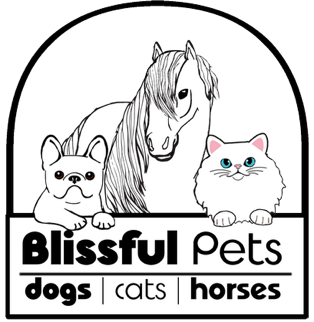Caring for Your Cat's Paw Pads: Why Paw Butter Can Be a Game-Changer for Hyperkeratosis and Dry Paw Pads
By Sarah Welk Baynum

Cats are playful and curious, and they love to end up in interesting places—like sitting on top of your refrigerator.
It’s incredible how cats seem to virtually levitate off the ground, jumping up and down from high places with ease. Cats innately know how to land based on how high they are jumping.
A cat’s seemingly “nine lives” and athletic abilities are partly thanks to their impressively designed paw pads.
However, sometimes, conditions of the paw pads, such as dryness, cracking, or hyperkeratosis, can hinder paw pad function and even cause your cat discomfort or pain.
This article will help you better understand how a cat’s paw pad functions, common conditions like dryness and hyperkeratosis that can affect them, and how to prevent and treat these conditions.
The Function of a Cat’s Paw Pads
Cats are digitigrade walkers, meaning they walk on the balls of their feet and fingertips. Their paw pad, which has several essential functions, is crucial to their mobility.
Some of the most important functions of a cat’s paw pad are:
- Shock Absorption: A cat’s paw pad acts like a shock absorber, protecting their bones and joints even when jumping from high places.
- Traction: Healthy paw pads provide excellent traction and grip for walking or climbing.
- Temperature Regulation: Because sweat glands are located on a cat’s paw pads and not on the hair-covered parts of their body, an important paw-pad function is to help them cool down or stay cool.
- Sensory Perception: Cats’ paw pads are covered in nerve endings, which help them detect pressure, texture, vibrations, etc.
Common Conditions That Can Affect Cat Paw Pad Health
Unfortunately, certain health conditions or even the weather can affect the function and feel of a cat’s paw pads.
By checking your cat’s paw pads often, you can catch any abnormalities on your cat’s paw pads. Cats can be good at hiding pain and discomfort, so by checking them often, you can begin remedying these issues sooner rather than later.
Dry and Cracked Paw Pads
A cat having dry or cracked paw pads can occur for a number of reasons.
Dry weather or low humidity in your home from running heat in the winter can cause a cat’s paw pads to become dry. If your cat is excessively licking their paws, or if their paws were exposed to harsh chemicals like household cleaning products, this can also cause paw pads to become dry.
In the winter, any ice melt salt you track indoors could be picked up by your cat’s paws, potentially causing excessive dryness. If your cat walks on extremely hot or icy surfaces, this can also lead to dryness in the paw pads.
If the dryness in a cat’s paw worsens, it may cause the paw pads to crack. Cracked paw pads can bleed, cause discomfort, and even lead to limping. If left untreated, cracked paws can also become infected. Keeping these external factors as minimal as possible can help prevent paw pad dryness and cracking.
Hyperkeratosis in Cats
A common skin condition that causes the buildup of keratin is called hyperkeratosis, also known as cat-horned paws. Hyperkeratosis can occur in other mammals, as well as humans. While technically, hyperkeratosis can occur anywhere on the cat’s body, it’s most commonly seen on the paw pads.
Keratin is a naturally occurring protein in a cat’s body that forms the outer layer of their hair, skin, and nails. However, the overproduction and accumulation of keratin can cause the cat's skin to harden and thicken, leading to what appears like “horns” on the cat’s paw.
The severity of keratin buildup can also vary. Sometimes, there is only minor callousing on the paw pad, while other times, long growths can appear on the bottom or side of the cat’s paw pad.
While hyperkeratosis doesn’t always cause severe problems, cats are sensitive creatures, meaning they will often be at least irritated by this buildup. This can lead to them excessively licking their paws due to irritation and further paw dryness.
In more severe cases of hyperkeratosis, cats can excessively chew, lick, or hold up at the affected paw pad. If the “horn” growth forms on any part of the pad that is weight-bearing, this can cause discomfort, pain, and even limping.
Because your cats’ paw pads have many vital functions and can be prone to these common conditions, it is important to keep them hydrated and healthy!

How Paw Butter Can Help
For dry, calloused, and irritated paw pads, The Blissful Pets Cat Paw Butter is a great way to prevent and treat some of these common conditions naturally.
Cat Paw Butter contains rich butters and oils that penetrate your kitty's paw pads. This results in moisturized, soothed cat paws that are once again velvety soft, comfortable, and functioning properly!
The Blissful Cat Paw Butter Ingredients include:
- Shea Butter
- Olive Oil
- Almond Oil
- Coconut Oil
- Castor Oil
- Avocado Oil
- Cocoa Seed Butter
- Oil Infusions of St. John's Wort, Comfrey, and Calendula
If your cat’s paws are cracked, extra irritated, or need a little extra soothing, The Blissful Cat Bye Bye Boo Boo Butter can help with any minor skin and paw pad irritation and wounds.
All of Blissful Pet’s products are individually handcrafted in Minnesota, mixed and poured one by one, and contain all-natural, organic, and ethically sourced ingredients.


